Thank you to the National Pork Board for sponsoring this post!
Mama Lin’s sweet and sour ribs are a family favorite. In my family, it’s known as 婆婆排骨 (“grandma’s ribs,” po po pai gwut in Cantonese), which is what my nephews and niece would say when they requested the dish. My mom often makes these ribs for my family gatherings because they’re so easy to prepare and we all can’t get enough of them. The ribs are marinated in a soy sauce, sugar, and vinegar mixture and cooked until the marinade caramelizes around the meat. The ribs are so flavorful that they’re finger-licking good.
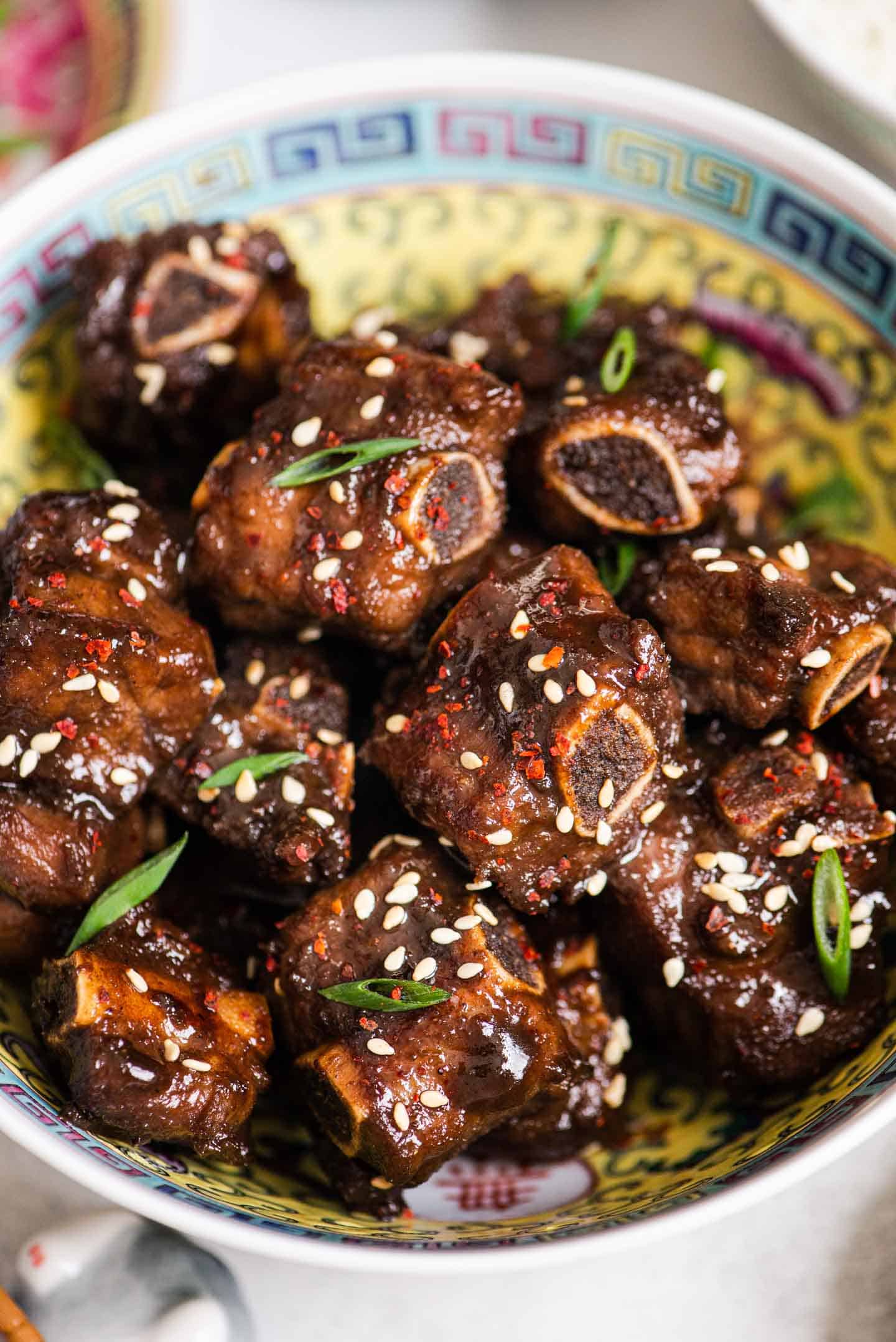
I’m excited that the National Pork Board has asked me to share Mama Lin’s sweet and sour ribs recipe as part of their Pork as a Passport campaign. This campaign highlights the diversity of pork dishes from various cuisines across the world and how these dishes play a central part in family gatherings. I’ve already shared my cha siu recipe (Chinese BBQ pork) for this campaign, and I wanted to highlight the versatility of pork by sharing a recipe using ribs.
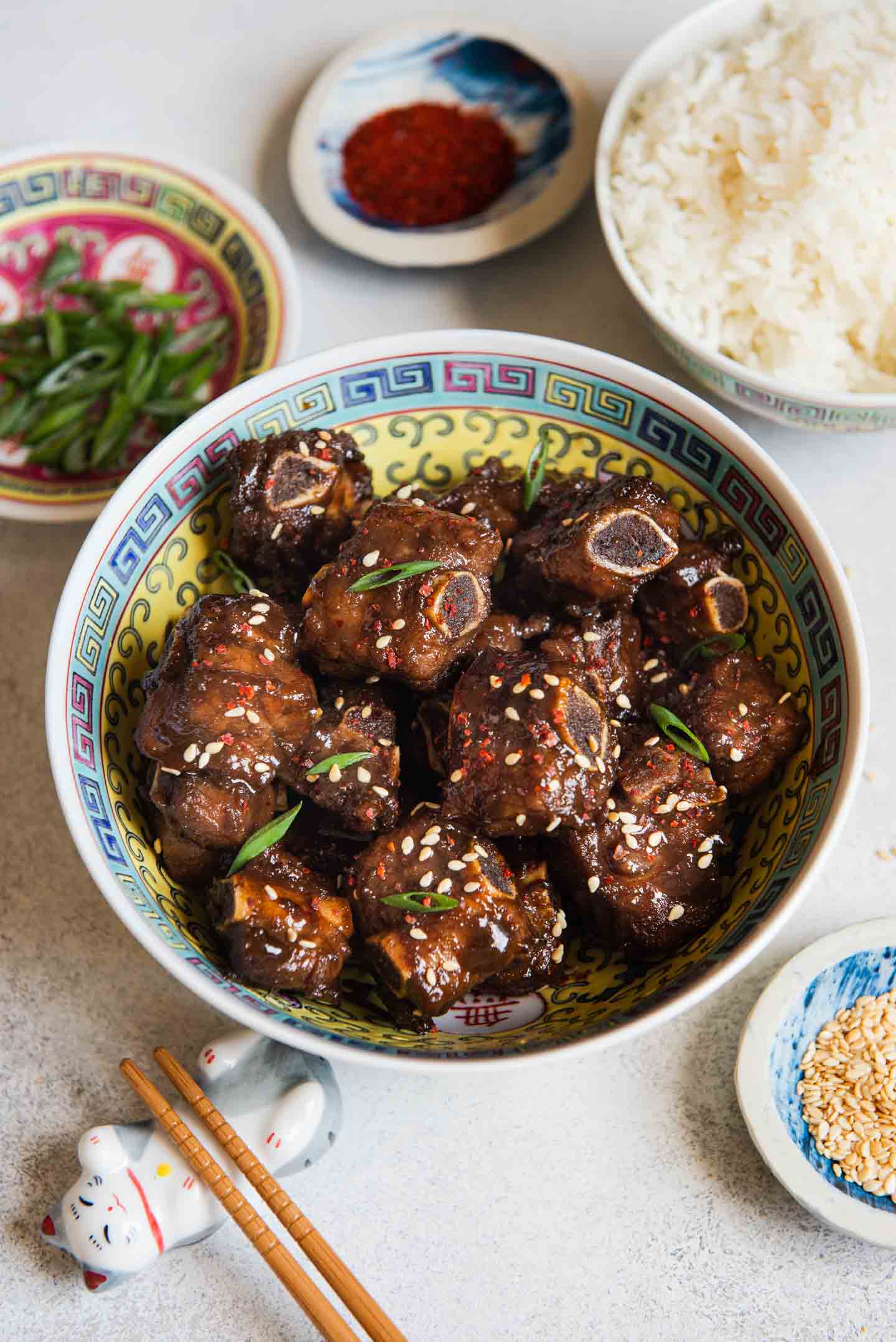
HOW TO MAKE SWEET AND SOUR RIBS
PREPARE THE RIBS
For this sweet and sour ribs recipe, I prefer using back ribs (also known as baby back ribs) over spareribs because the bones on the back ribs are smaller and the meat is more tender. Back ribs come from the ribs around the pork loin (essentially, the pig’s back). Spareribs, on the other hand, come from the belly area and the bones are usually larger. If you can’t find baby back ribs easily, you can use spareribs.
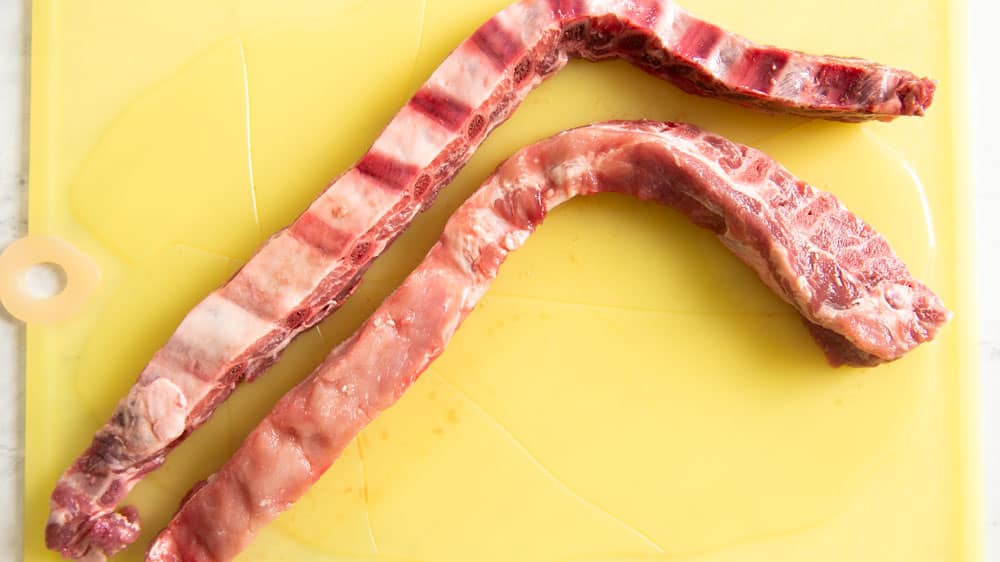
Before slicing the ribs into smaller pieces, check the bone side of the ribs and remove any membrane (or silverskin) that’s covering the bones. In the photo above, you can see that there’s a white layer of membrane covering the top strip of ribs. That layer can turn leathery once cooked and it can prevent the marinade from penetrating the meat. You can use your fingers to grab onto that membrane and rip it off.
To cut the strip of ribs into small pieces, slice the meat in between the bones. Then, transfer all the pieces of ribs into a bowl.
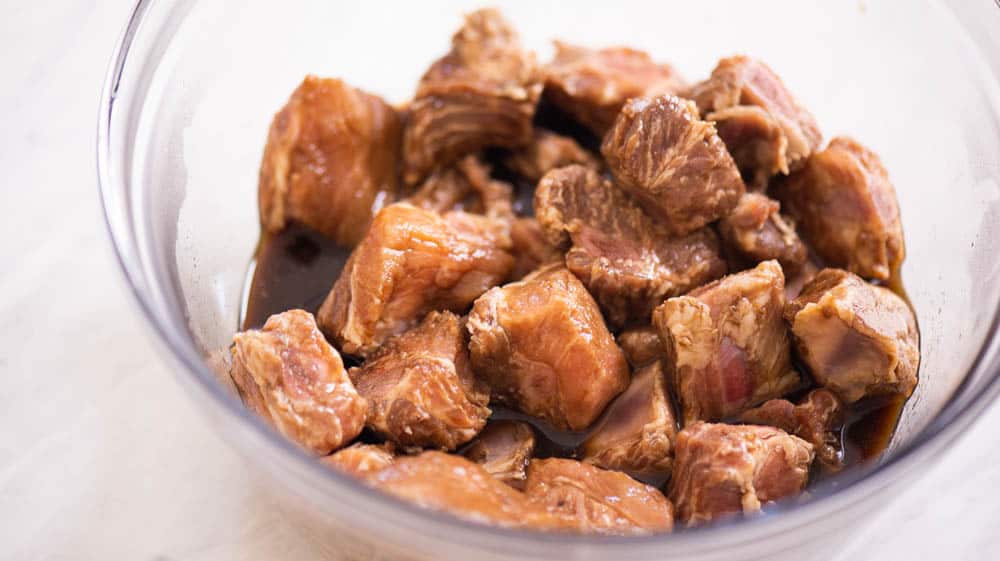
MARINATE THE PORK
The marinade uses several ingredients: rice cooking wine, soy sauce, Zhenjiang vinegar, sugar, salt, and garlic powder. Zhenjiang vinegar (also known as Chinkiang vinegar) is a rice-based black vinegar with a malty flavor profile. If you can’t find this easily, use white vinegar or rice vinegar. Although they are similar in color, don’t use balsamic vinegar because it’s too sweet and there isn’t enough tangy flavor.
Mix all the ingredients for the marinade together and pour it over the ribs. Coat the ribs with the marinade. Cover the bowl and refrigerate the ribs for at least 2 hours. I like stirring the ribs after an hour to ensure that all the ribs are evenly marinated.
COOK THE SWEET & SOUR RIBS
Heat some oil in a wok (or sauté pan) over high heat. Using tongs, extract the ribs from the marinade and transfer them to the wok. Stir fry them for about 1 minute. Then, pour the marinade into the wok and cover it with a lid. Reduce the heat to medium and cook the ribs for 7 minutes.
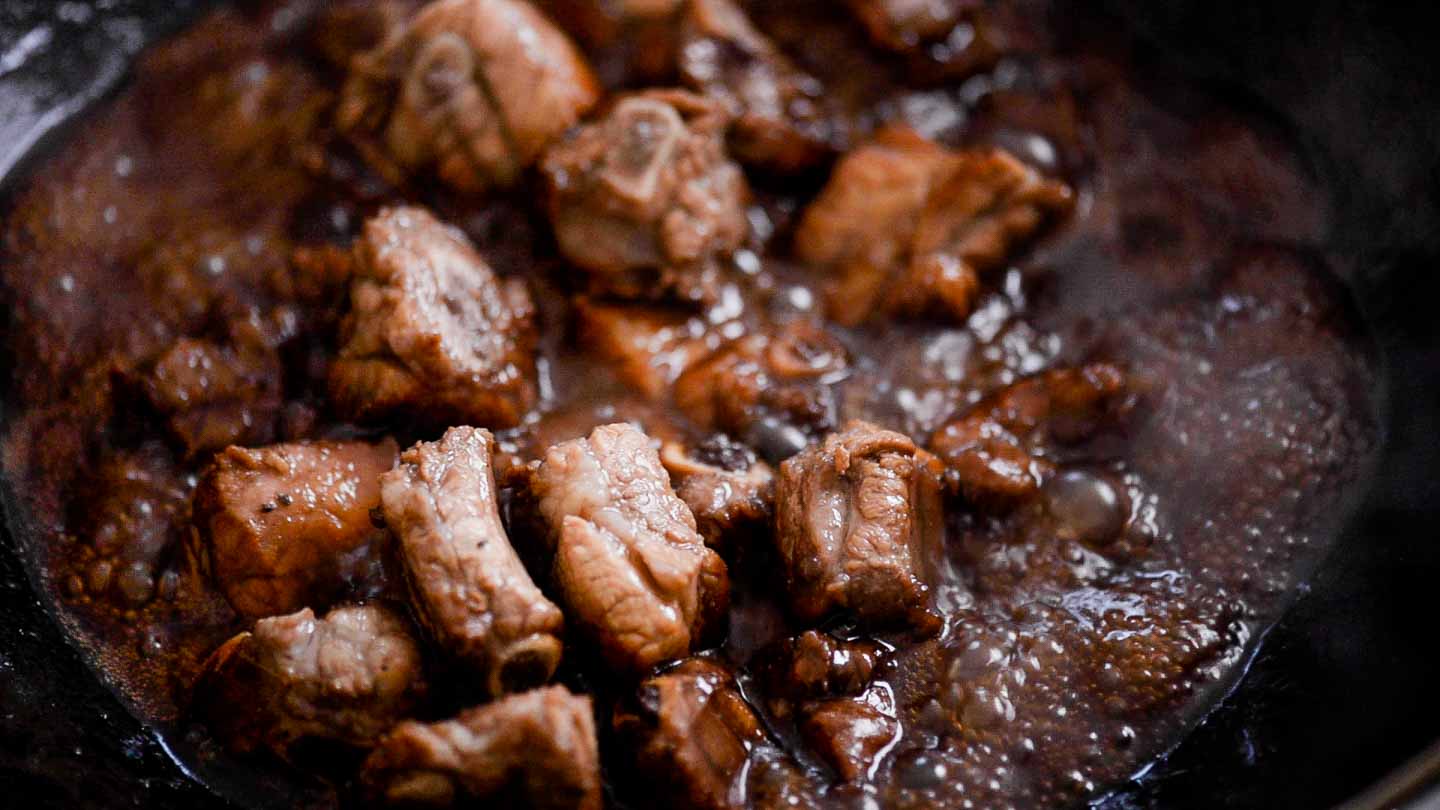
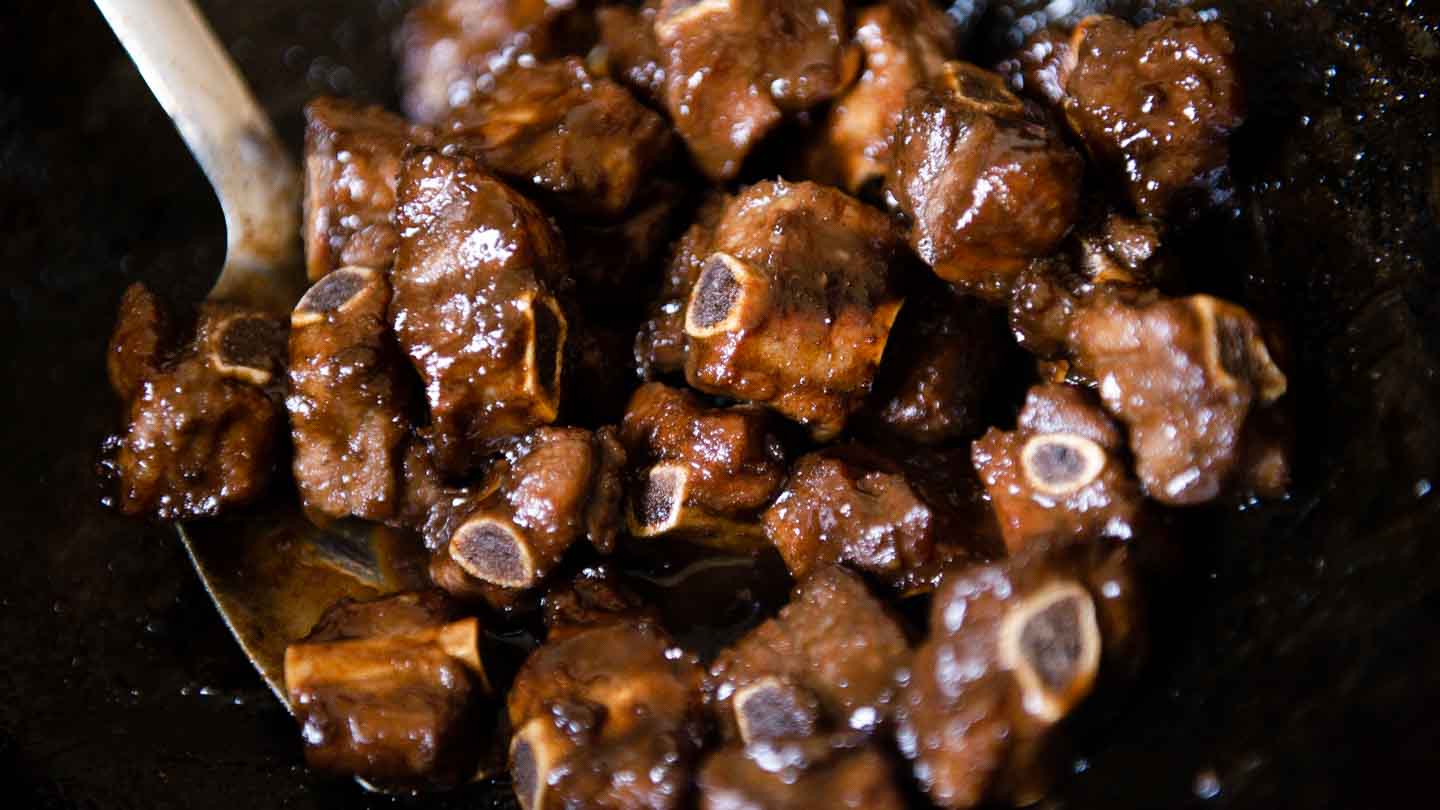

MORE PORK RECIPES
- Pork and Cabbage Potstickers
- Crispy Vegetable and Pork Spring Rolls
- Cha Siu (Char Siu, Chinese BBQ Pork)
Mama Lin’s Sweet and Sour Ribs
Ingredients
- 1 1/4 to 1 1/2 pounds strips of baby back ribs, between 1 to 1.5 inches wide (see note 1)
- 3 tablespoons sugar
- 1/2 teaspoon salt
- 1/2 teaspoon garlic powder
- 3 tablespoons Zhenjiang vinegar, also known as Chinkiang vinegar
- 2 tablespoons soy sauce
- 1 tablespoon cooking rice wine
- 1 1/2 tablespoons canola or vegetable oil
Optional Garnish
- 1/3 cup pineapple chunks
- toasted sesame seeds
- sliced scallions
- gochugaru, Korean red pepper flakes
Instructions
- Before slicing the ribs into smaller pieces, check the bone side of the ribs and remove any membrane (or silverskin) that’s covering the bones (it’s a relatively thick white layer). The silverskin can turn leathery once cooked and it can prevent the marinade from penetrating the meat. Use your fingers to grab onto that membrane and rip it off.
- Slice the strips of baby back ribs into small pieces by slicing in between each bone. Transfer the ribs to a medium mixing bowl.
- In a small bowl, mix the sugar, salt, garlic powder, vinegar, soy sauce, and rice wine. Pour the marinade over the ribs and stir to coat the ribs with the marinade. Cover the bowl and let the ribs marinate for at least 2 hours (or overnight). Periodically, give the ribs a stir to ensure that all the pieces are evenly marinated.
- To cook the ribs, heat the canola oil in a wok (or sauté pan with a lid) over high heat. Using tongs, transfer the pieces of ribs to the wok. Stir fry the ribs for about 1 minute.
- Pour the marinade into the wok and cover the wok with a lid. Reduce the heat to medium and cook the ribs for 7 minutes.
- Uncover the wok. It is normal if you see a lot of liquid in the wok. Increase the heat back to medium-high and continue cooking the ribs until there’s barely any liquid left in the wok. This should take about 3 to 4 more minutes (see note 2). Stir the ribs frequently to ensure that they don’t burn. The ribs should look darker as you reduce the liquid.
- Turn off the heat. Mix in pineapple chunks, if you like. Sprinkle the ribs with sesame seeds, scallions, and gochugaru, if desired.
- Transfer the sweet and sour ribs to a serving plate or bowl. Serve the sweet and sour ribs with Chinese garlic green beans, jasmine rice, or Chinese garlic cucumber salad.
Video
Notes
- In Asian supermarkets, it is very common to see ribs that are cut into strips because Asian pork dishes tend to feature ribs with shorter bones. If you can’t find the ribs already cut into strips, ask the butcher or person working at the meat counter to slice the pork for you into strips.
- Some people like to add 1 to 2 teaspoons of vinegar as they reduce the marinade so that the ribs will be more tangy.
Nutrition
Disclosure: This post was sponsored by the National Pork Board. You can find out more about them on their website, Facebook, YouTube, or Twitter.

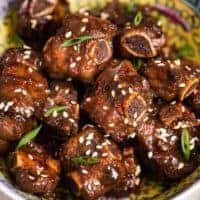

Helen says
Hello! I have all the ingredients to make this except Zhenjiang vinegar. I have chinese black vinegar at home – will it taste similar if I use this instead? I also have rice wine vinegar, not sure if this is more similar. Thank you!
Nancy says
The marinade did not break down the fibrous short rib what so ever. Was like eating a rubber band sandwich, I had to doctor a stock with the sauce left with the ribs and simmer them for two hours before you could attempt to bite into them the way a short rib should be. The flavour was a little “meh”….
Rod Ferris says
Lisa suggests baby back ribs which are much more tender. Most “sweet and sour cut” ribs are side ribs and these are much more fibrous. As for “meh” it’s up to you to make it “wah”! Always taste your sauce before you ad it to your meat! Then your sweet and sour will be spectacular!
Rick Kauffman says
You used beef plate short ribs and expect them to come out like baby back ribs??? They aren’t even close to the same cut. You can’t use this recipe and expect short ribs to not be rubber. I’m sorry to say… but this is on you. Not the recipe. I’ll give you zero stars and the recipe 5 as the meat fell off the bone for me
Raquel says
Perfect ribs, made as is except added a bit of chili oil.
Lisa Lin says
Thanks, Raquel!
Belle says
Hi Lin, i have the ribs and most of the ingredients but I don’t have Zenzhiang vinegar and cooking rice wine.
I do have rice vinegar, white vinegar and Cabernet Sauvignon. I’m thinking of adding a little bit of Sauvignon or white vinegar. What do you think?
Lisa Lin says
Rice vinegar probably works quite well. I don’t know about the cab though. You can replace it with a dry sherry (or just leave it out if it’s too much of a hassle). Hope this helps!